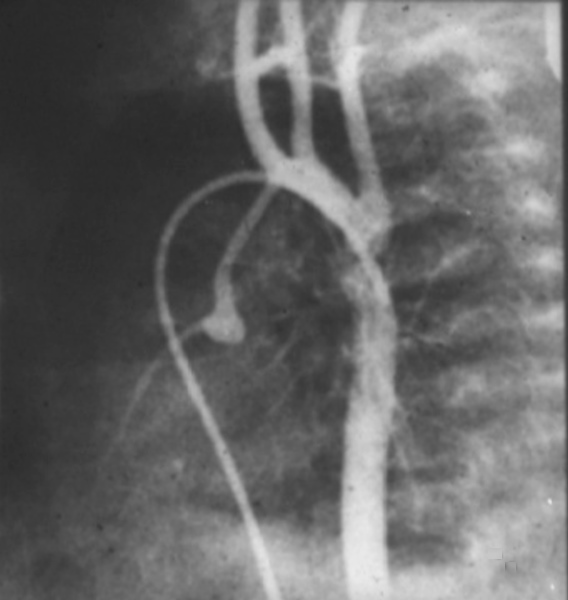Aortic Atresia
The Common Vein Copyright 2007
Jessica Humphries
Definition
Aortic atresia is a circulatory disease that is characterized by malfunction of the aortic valve.
The cause of aortic atresia is a congenital defect in the aortic valve such that it is underdeveloped.
The result of this disease is inadequate systemic oxygen delivery, usually leading to death within 2-3 weeks of life.
The most common diagnostic procedure for aortic atresia is echocardiography.
This disease is usually treated with corrective surgery, such as primary biventricular repair and the Norwood procedure.
Atresia
Aortic atresia results from congenital lack of development of the aortic valve usually associated with varying degrees of underdevelopment of the left ventricle, proximal aorta and mitral valve. This congenital defect results in inadequate systemic oxygen delivery and is usually fatal within 2-3 weeks of life. Diagnostic evaluation using echocardiography is most commonly used. Primary biventricular repair is the most effective surgical treatment of aortic atresia. The Norwood procedure is commonly performed. It involves the reconstruction of the neo-aorta using homograft tissue, pulmonary root tissue and proximal aorta tissue. The procedure requires cardiopulmonary bypass, aortic cross-clamping and hypothermic circulatory arrest.

The aortogram has been performed through a catheter that has entered via the right femoral vein, coursed through the right atrium, right ventricle and pulmonary artery entering the descending aorta via a patent ductus arteriosus. There is retrograde filling of the ascending aorta and coronary arteries. The aortic valve is atretic and there is no opening between the LV and ascending aorta. In addition the ascending aorta, arch and isthmus are hypoplastic and there is a post ductal coarctation.
00269b02 Davidoff MD 00269b01 00269b02 00269b03
